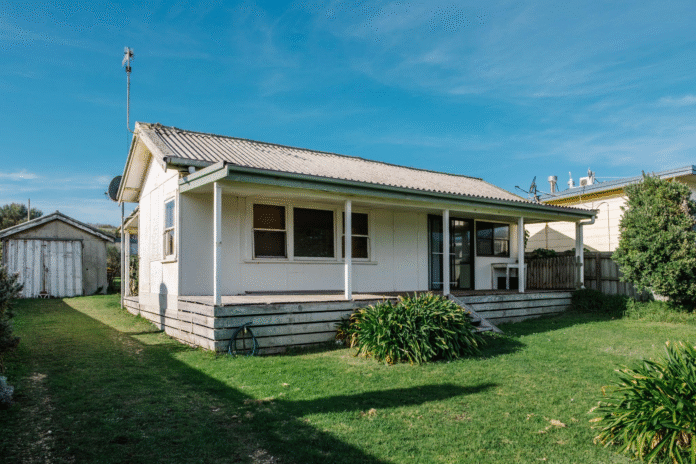Buying an older home can feel like a charming and budget-friendly option—but it often comes with hidden challenges. Behind the walls, there may be ageing pipes, outdated electrical wiring, or pest infestations that could lead to costly repairs later on. That’s why organising a thorough pre-settlement inspection is so important. It can reveal these issues before you finalise the purchase.
Plumbing Problems Often Found in Older Homes
1. Corroded or Rusty Pipes
Many older homes still have galvanised steel or cast-iron pipes, which corrode over time. This can lead to leaks, burst pipes, and even discoloured water. These pipes are often hidden behind walls or beneath floors, making them easy to miss during a walk-through.
2. Blocked or Collapsed Drains
Shifting soil, tree root intrusion, and decades of build-up can damage older clay or concrete pipes. Left unchecked, this can result in frequent drain blockages, slow water flow, or even internal flooding.
3. Unsafe Pipe Materials
Some older properties may still have lead or polybutylene pipes, both of which are no longer considered safe. Lead can contaminate drinking water, while polybutylene pipes are prone to cracking and leaks.
4. Leaks Hidden Behind Walls or Under Floors
Not all leaks are visible. Slow leaks can cause mould, rot, and structural damage without you knowing. If you notice water stains, musty smells, or warped flooring, these could be signs of hidden moisture problems.
5. Weak Water Pressure
Low water pressure throughout the home is often caused by internal corrosion or mineral build-up in ageing pipes. This can affect your taps, showers, and appliances, making everyday use frustrating.
6. Pipe Relining: A Modern, Non-Invasive Fix
Rather than digging up old pipes, pipe relining offers a modern, no-dig solution that reinforces your existing pipes from the inside. It’s quicker, cleaner, and more cost-effective—ideal for maintaining the charm of an older home while upgrading its plumbing.
Electrical Hazards in Homes with Old Wiring
1. Old Wiring Can’t Handle Modern Loads
Older homes were built at a time when we used far fewer electrical devices. Today’s demand—from appliances to air conditioning—can overwhelm outdated wiring, leading to tripped circuits or even fire risks.
2. Deteriorated Insulation
Over time, wire insulation becomes brittle or cracks, especially in roof spaces and wall cavities. Exposed wires increase the risk of shocks, short circuits, or electrical fires.
3. Lack of Safety Switches and Circuit Breakers
Many older homes lack essential safety features like Residual Current Devices (RCDs). These devices cut off power instantly in the event of a fault, preventing serious injury or fire. Without them, the risk to occupants is significantly higher.
4. DIY or Unsafe Electrical Work
It’s not uncommon to find homes with non-compliant or DIY electrical work. Loose connections, overloaded outlets, or improper fittings are not just unsafe—they can also result in failed inspections.
5. Fire Hazards
Old wiring is a leading cause of electrical fires in older homes. Sparks from worn cables can ignite insulation, timber framing, or other flammable materials.
Hire a Local, Licensed Electrician
Before you settle on an older property, arrange an inspection after searching on any SERP for electrician near me in your area. They can assess the electrical system, identify safety issues, and recommend upgrades. It’s a small cost upfront that can protect your family—and your investment—for years to come.
Common Pest Infestations in Older Homes
Older homes often have gaps in walls, foundations, and timber framing that create the perfect environment for pests. Damp areas, poor ventilation, and ageing materials also make these properties more attractive to unwanted guests.
Termites and Timber Damage
Termites can silently destroy floorboards, walls, and support beams. Because the damage is often hidden, it’s not always picked up until it’s severe—and unfortunately, termite damage is rarely covered by standard home insurance.
Rodents in Roof Cavities and Walls
Mice and rats love the dark, unused spaces in older homes. They chew through wires, damage insulation, and pose health risks through droppings and urine.
Cockroaches and Other Insects
Dark, damp corners under sinks or behind appliances can quickly become breeding grounds for cockroaches and other pests. Once they settle in, infestations can spread quickly and become difficult to manage.
Get Professional Pest Control
Engage with a reputable pest control Sydney company before buying. A thorough pest inspection can detect infestations early, helping you negotiate repairs or treatment as part of the sale process.
Why You Should Always Get a Pre-Settlement Inspection
1. Detect Hidden Issues Early
Even if the home looks great on the surface, hidden problems like damaged wiring, worn pipes, or pest infestations can lurk beneath. A pre-settlement building inspection helps uncover these issues before you’re locked into the purchase.
2. Save Money on Future Repairs
Finding problems early lets you request repairs, renegotiate the price, or back out of a risky deal. Services like pipe relining, pest treatments, or electrical upgrades are much more manageable before you move in.
3. Peace of Mind
Knowing the real condition of the home gives you confidence in your purchase. With professional input from licensed electricians, pest controllers, and plumbers, you avoid costly surprises down the track.
4. Make Informed Decisions
An inspection gives you a clear picture of what you’re buying. It’s a simple step that could save you stress, time, and money—not to mention protect your future home’s value.
Conclusion
Older homes have character and charm—but they can also hide expensive problems. From corroded pipes and outdated wiring to pest infestations, the risks are real. That’s why a pre-settlement inspection is so important—it helps you uncover issues early and plan accordingly.
